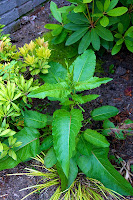It’s getting a little late in the season to talk about spring kings, but it seems that every year I learn a little bit more about these tantalizing members of the bolete family that are so emblematic of the Kingdom of Fungi in general. For instance, even though it only received species designation in 2008, Boletus rex-veris has been picked and eaten by Italian-Americans for a hundred years. You can read the many spring porcini posts on this blog—from my first post to my experiments with freezing buttons to taxonomic clarity—as a record of my own progress.
Much of my understanding about how to cook and care for the the “little pigs” has been won through trial and error. There just isn’t an operating manuel. As you might recall, I started “field dressing” my porcini a couple years ago in an effort to keep them clean and to combat the bugs that are as boletivoracious as us. Boletus rex-veris, in contrast to B. edulis, does much of its growing underground, so it can be quite a dirty mushroom. Dirt and duff-covered mushrooms piled together in a basket or bucket will share their dirt like STDs, making for a difficult cleaning proposition at home, particularly with the pores under the cap. Wherever I happen to find them, I clean them up and check for insect infestations, taking precautions to cover up the scene of the capture when I’m finished.

Field dressing consists of trimming the stem of any dirt, cleaning the cap as thoroughly as possible, and finally slicing the mushroom in half to check for worms. Even seemingly pristine #1 buttons can have fly larvae in them that will make a mess in no time. If I see any bug activity (as in the image at right and a closeup below, showing the culprit), I slice it out with my knife. This often takes care of localized infestations and saves a mushroom that would otherwise be ruined before dinnertime.
And don’t be fooled. Bolete fly larvae can riddle a mushroom with their hungry tunneling in the time that it takes to drive your haul home from the mountains. As they warm up, the larvae become more active. Unless you crank your air conditioner, the temperature in your car will cause the bugs to stir. This isn’t too much of a problem provided you don’t dilly-dally along the way—and you get the mushrooms in the refrigerator asap.

Sometimes I’ll camp in the woods and spread my mushroom hunting over a couple days or more. Usually, when multiple species are fruiting at the height of the spring season, I’ll try to do my morel hunting at the beginning and save my porcini hunting for last. A load of porcini hanging around camp unrefrigerated is an invitation to disaster. A couple weeks ago I came home with several pounds of #1 and #2 buttons. It was cold and drizzly in Seattle and I was exhausted, so I left my basket of mushrooms on the front stoop overnight. Bad call. Even temps in the low-40’s aren’t cool enough. Plus, humidity is a killer. About half the load was beyond repair by the next day. Even a cold fridge doesn’t completely stop the worms in their tracks; it just slows them down (though I suspect a really cold fridge can prevent additional larvae from hatching).
I’ve been paying close attention to a recent batch. A few mushrooms that got field dressed and looked absolutely spotless before the drive home ended up having some noticeable tunneling within three hours of picking. Others that still looked perfect got sliced in half again (i.e. quartered) in my kitchen. This revealed minor bug activity that required immediate action. Finally, even mushrooms that passed with flying colors required checking after a day or two in the fridge, and some of these showed minor infestation. The point is, if you want to pick and eat porcini and not cook up a panful of maggots, you need to be vigilant.
The bolete below has the appearance of a #1 button. It was firm and didn’t show any signs of infestation when I trimmed the stem. I decided to keep it whole. After a week in the fridge, this is what it looked like. Look closely and you’ll see that the worms attacked via the cap, not the stem. If I had cut the mushroom in half when I picked it, I might have been able to isolate the infestation and save it.
If this is all too much for some folks, who don’t even want to think about extra protein in their food…well, mushroom hunting probably isn’t your cup of beef.
P.S. If you’re in British Columbia, I’d like to know whether you find B. rex-veris, and if so, how far north.
Like this:
Like Loading...












